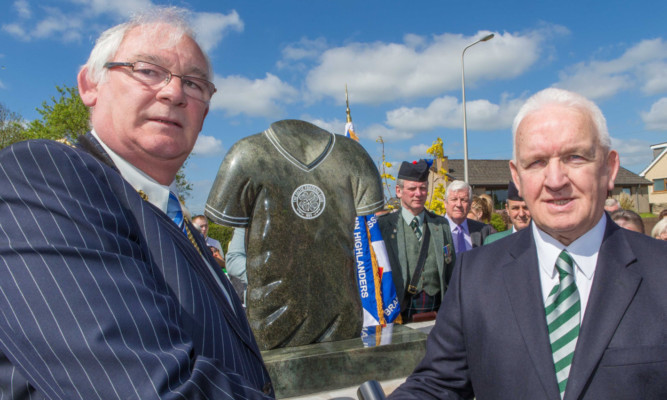A lasting memorial to a fallen Fife football legend has been unveiled in his home village.
Peter Johnstone rose to fame playing more than 200 games for Celtic, after his prodigious talent in the junior ranks was spotted by scouts.
But at the very height of his career came the outbreak of the First World War and he felt he had to go to the bloody battlefields of Europe to fight for his country. The young Glencraig sporting hero was never to return.
It was on May 16 1917 that the Celt born in Cowdenbeath in 1887 was reported missing, presumed dead, in France.
For many years the young sportsman was all but forgotten in his home patch but last year a group of locals got together to create a memorial.
A centre-half and utility player, Johnston was the best-known Celtic player to have fallen in the Great War.
The former coal miner, who was brought up in Glencraig, signed for Celtic in January 1908 from Glencraig Celtic, after spells with Buckhaven and Kelty Rangers.
He made his debut in April the next year, a match which was to mark the start of more than 200 appearances for the Glasgow giants, playing a key role in Willie Maley’s great team.
Johnstone was an idol of the Celtic faithful and a deserved recipient of his first Scottish Cup medal after the final against Clyde in 1912.
He won four league championships, two Scottish Cups, three Glasgow Cups and four charity cups.
It was in March 1916 seven months before he played his final game for the club that Johnstone signed up to the Army at a recruiting station outside Celtic Park.
In May he was recruited to the 14th Battalion of the Argyll and Sutherland Highlanders and, latterly, the 6th Battalion of the Seaforth Highlanders.
After his last match a Glasgow Cup victory the 28-year-old joined his comrades as Private 285250.
Seven months later, to the shock of Celtic’s loyal following, he lost his life in the Battle of Arras and a dedication to his memory is inscribed on Bay 8 of the Arras Memorial in Fauborg d’Amiens cemetery.
Now, to ensure he is also remembered in his native Fife, a memorial garden has been created. Appropriately, it is positioned at the entrance to the former Glencraig Colliery, where Johnstone had first gone to work at the age of 13.
